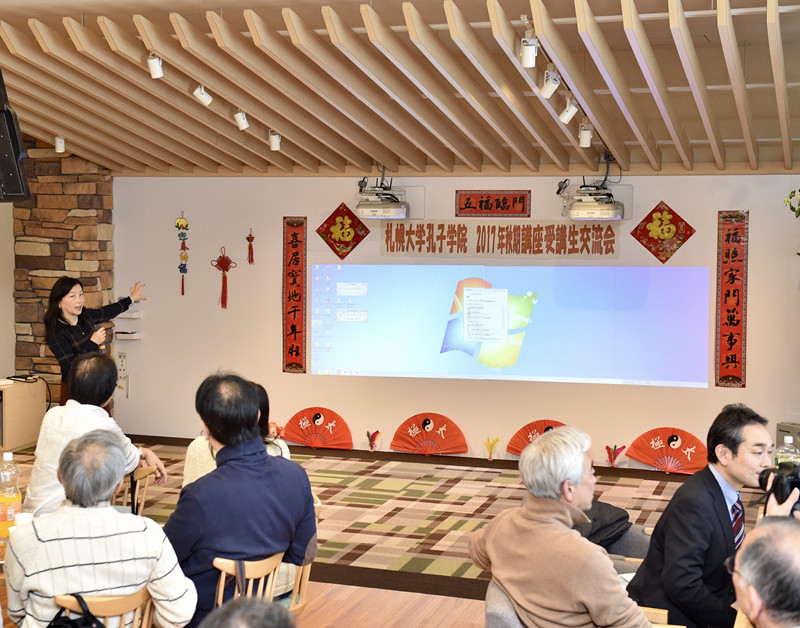Editor: The report series named “Women Envoys of Chinese Culture” are carried out by the Press Association to commemorate this year’s International Women’s Day, featuring three female scholars of GDUFS who just returned last semester from the university’s overseas Confucius Institutes. In the series, Zheng Qingjun, Chen Hui and Yu Liuyi will tell us their encouraging and inspiring stories in three different countries about how they have disseminated the cream of Chinese culture and contributed to the amiable relations between China and other civilizations – despite culture shock and other barriers.
Ⅰ
YU Liuyi, teacher from the Faculty of Asian Languages and Cultures of GDUFS. Deeply moved by the charm of Chinese culture, she headed for Sapporo, Japan and resolutely took up the post of the Director of the Confucius Institute at Sapporo University.

YU introduced paper-cutting to Japanese students
YU bided her time patiently, and finally in 2015 she got the chance to go back to Japan and accomplish her task. She spared no effort to apply for the position at Sapporo University, for the reason that the only Confucius Institute in Japan is situated in the Hokkaido region: “The Confucius Institute is a fabulous key to Chinese culture. They are able to tell Chinese stories in a way that can attract learners’ attention, and moreover, blazing abroad the glamour of Chinese culture through the learners.” YU determined her mind to make a difference by working there.
Ⅱ
Before taking the chair of the Director of the Institute, YU Liuyi dedicated herself to teaching, and she was new to the area of administration. After she took over the chairmanship, she found herself in such grave challenges as preparing annual budgets and controlling all costs. Despite the countless brand new difficulties, she was firm in action and pressed forward by consulting experienced colleagues and communicating with the headquarters of Confucius Institute and GDUFS. Just as the saying goes:“Constant effort yields sure success”; in 2017, YU became a pioneer in education transformation and restructure:
First and foremost, the shifting of the teaching focus should be highlighted. YU insisted to invite Japanese university students to be involved in the courses which were mainly attended by office workers, and more teaching resources are now placed in Chinese language teaching in universities. Secondly, more lectures and competitions targeted to exchange Chinese culture among Japanese were held. For example, a speech contest named Chinese Bridge gained unparalleled success, and not only undergraduates participated in such contests, students from secondary schools also took an active part in these various activities. Moreover, students’ positive reaction to the summer camp held in GDUFS gave her further motivation: “After visiting China in person, a large number of Japanese students begin to take studying in China into consideration. My hometown really prepossessed them in favor.”

YU shared several interesting costumes of Chinese Spring Festival.
YU also mentioned her unavoidable homesickness during her daily life, especially in traditional festivals. In order to relieve her homesickness, her colleagues and students offered to make Chinese cuisine with her, sharing their unique way of cooking the Northeast food.
As an excellent and ardent cultural ambassador, YU Liuyi carefully and responsibly fulfilled her own duties, undertaking and developing Chinese culture.

